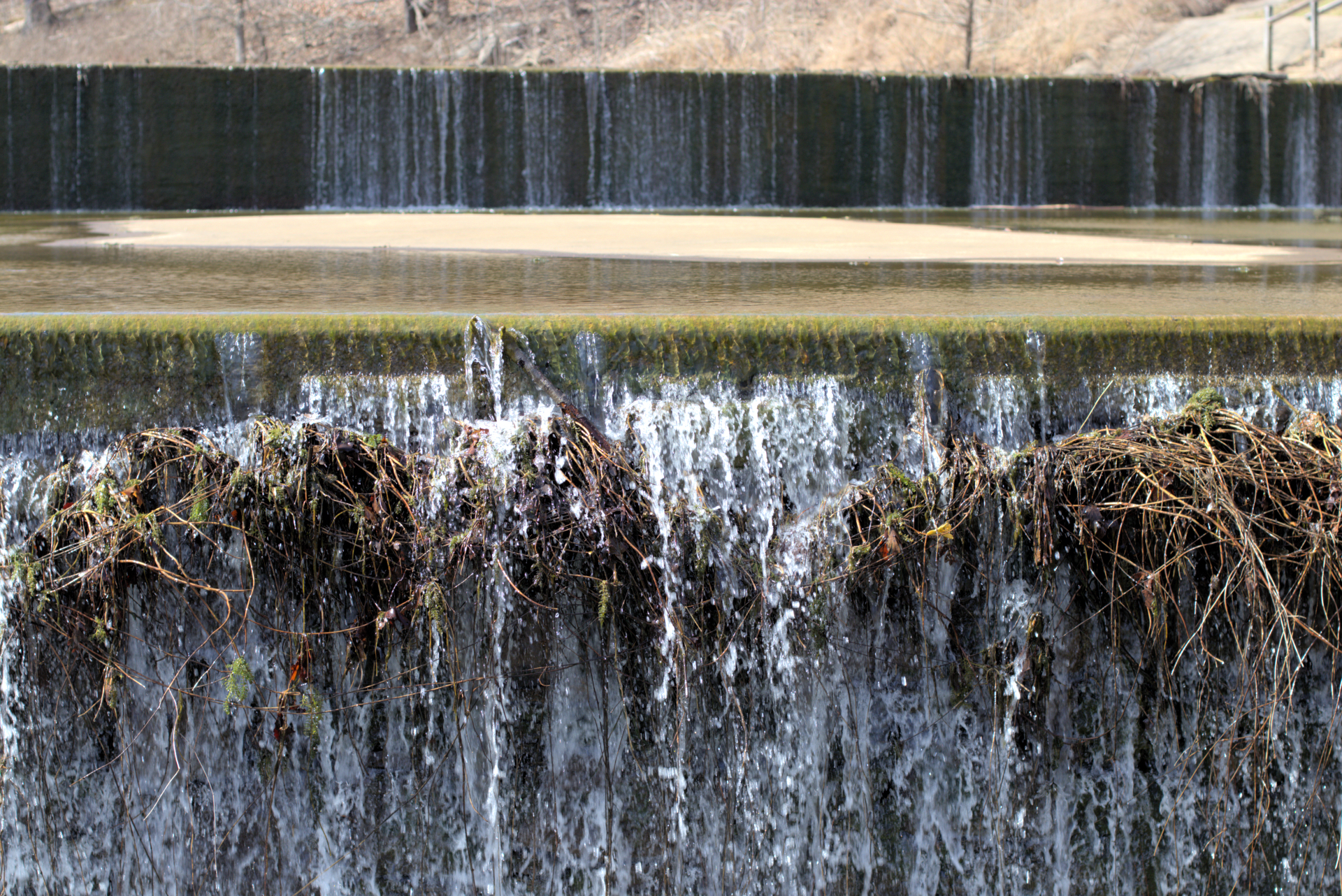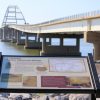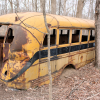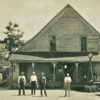One could say Hematite Lake is a well-kept secret, but locals know it as a beautiful place to hike just about any time of the year.
Hematite Lake is located near Lake Barkley in Land Between The Lakes, about 15 minutes north of either the Lake Barkley Bridge at Canton or the Golden Pond Visitors Center.
The man-made lake is about three-quarters of a mile long and about 1,000 feet or so across. Hematite is a recreational hiker’s dream with a 2.2-mile trail that can be easily conquered in under 90 minutes.
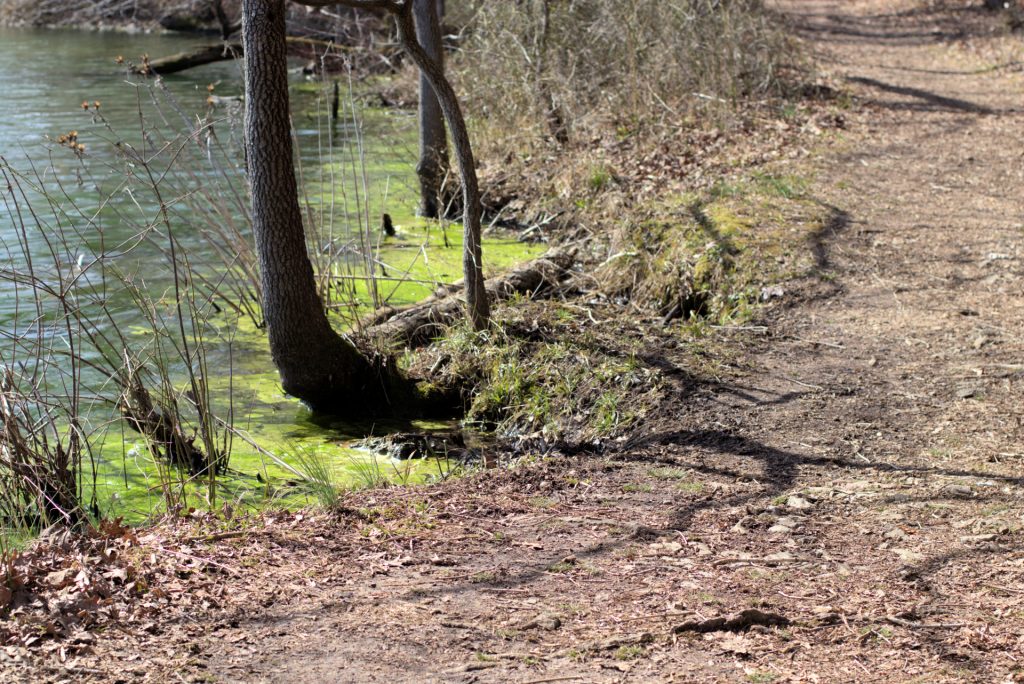
Some parts of the trail are right on the water’s edge. Other parts of the trail are reminiscent of ones you’ll find in the Smoky Mountains with large boulders and some roots. Huge, old-growth trees can be found along the trail.
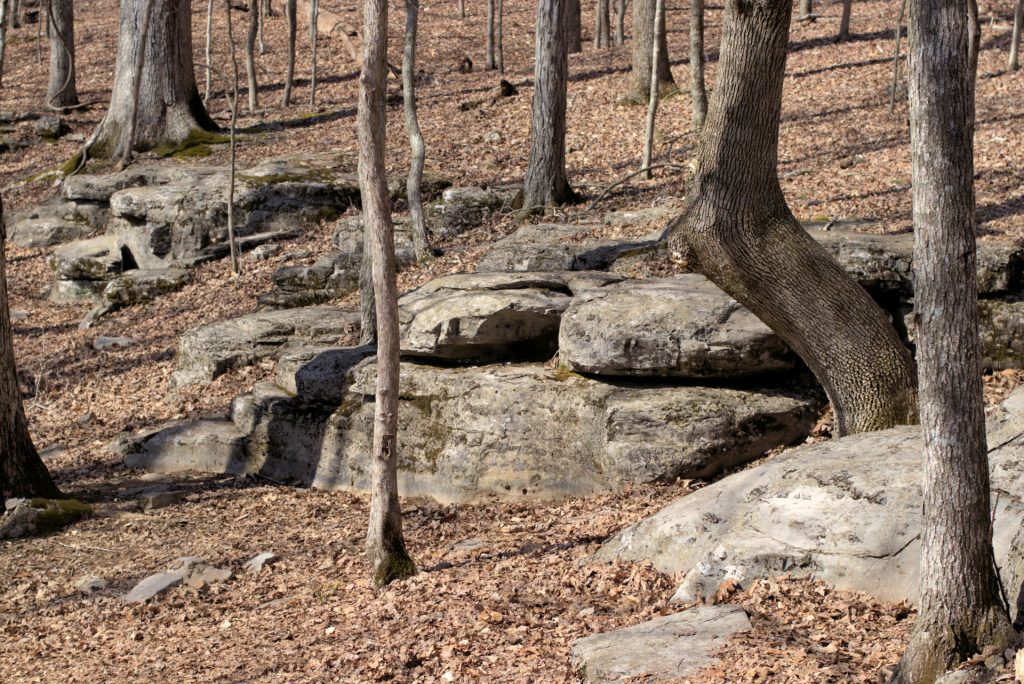
One of our favorite features is the newly constructed boardwalk and series of bridges across the back of the lake, creating an easy path through the backwaters and marshes of Hematite Lake.
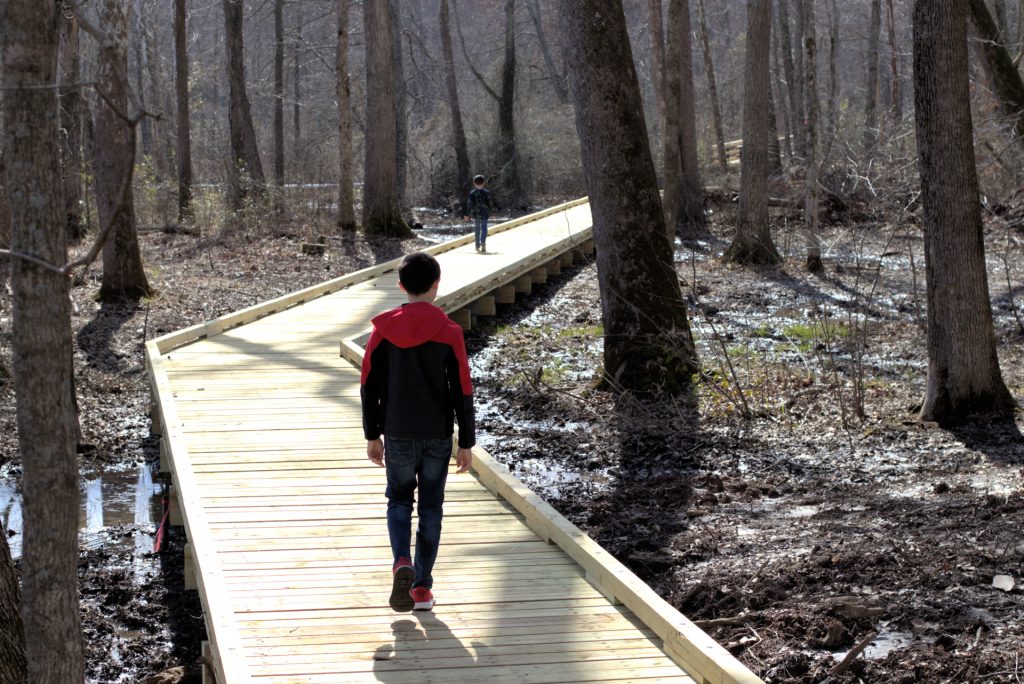
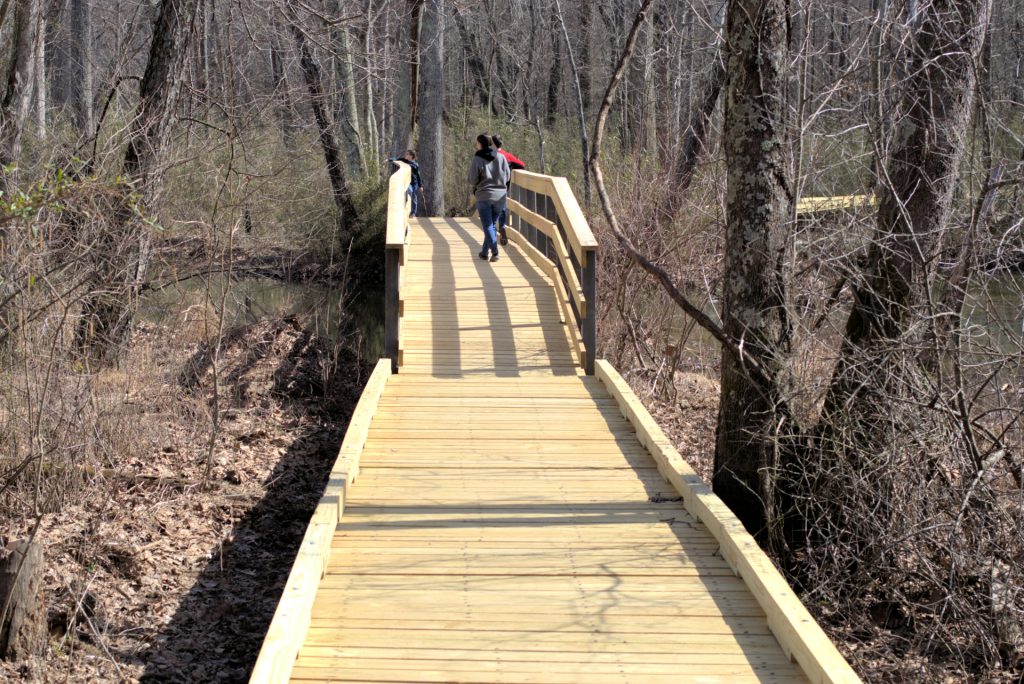
And then there’s the dam. The trail crosses the dam with steppingstones that make passage an adventure, especially for kids. They’ll really enjoy the experience when water is spilling over the edge.
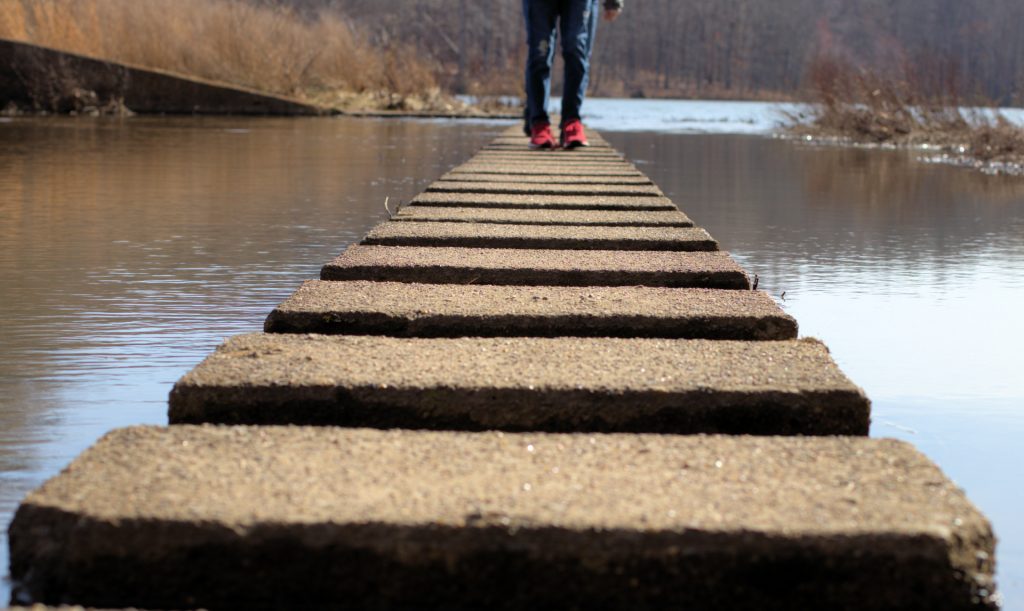
The dam is not high and isn’t really that dangerous, but you would want to keep an eye on small children when crossing.
How Did Hematite Lake Get There?
The history of this place traces back before the Civil War, when this was the location of a thriving iron industry. The ruins of Center Furnace, located next to the entrance of Hematite Lake, is evidence of a large pig-iron producing community that began in 1852 and lasted until 1912.
With the furnace cranking out 30 tons of iron every 24 hours at its peak, the industry created many hundreds of jobs for the area. Several slaves also worked at the site before the Civil War. The furnace ceased operations in 1912 and the surrounding area became economically depressed.
In 1936, the US Government purchased 40,000 acres of land in this area from the Hillman Land Company and an additional 15,000 to 20,000 acres from other landowners. Two years later, President Franklin D. Roosevelt issued an order that designated all this federal land as a wildlife refuge. The area stretched from Moss Creek to Turkey Bay, and between the Tennessee and Cumberland Rivers. This area became known as the Kentucky Woodlands Wildlife Refuge.
The Works Progress Administration (WPA) and the Civilian Conservation Corps (CCC) began working on some projects in this area. The approval to create a new dam near the site of the old Center Furnace was granted in 1940, with construction coming shortly thereafter.
When the Tennessee Valley Authority purchased the remaining 110,000 acres around the Kentucky Woodlands Wildlife Refuge in the 1960s, the agency developed a trail and the first boardwalk around Hematite Lake. The steppingstones and abutment to the dam was created in 1965-66, according to Carl Feagans, archaeologist for Land Between The Lakes.
Hematite Lake Today
This is a great place to have a picnic and take a great hike, regardless of the season. We’ve been here many times with our latest venture on a warm and sunny February day. There are several picnic tables and a restroom at the site. Kayakers can enjoy the lake with a small gravel launch area along the shore.
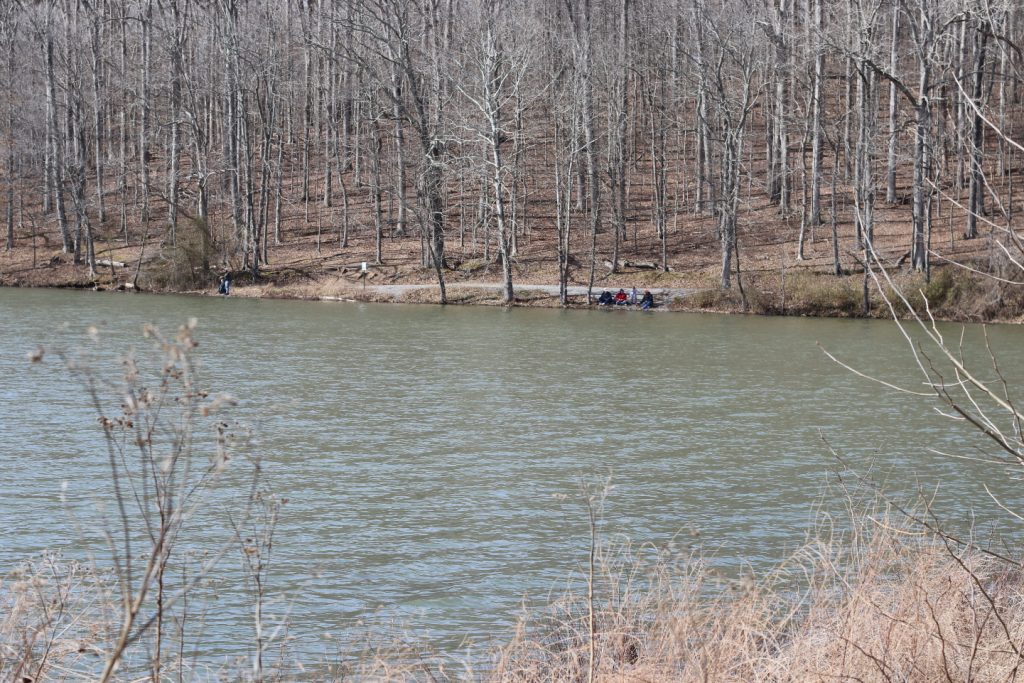
History-lovers will enjoy the evidence of pits and quarries of Center Furnace, which can be seen along Hematite Lake’s shorelines. Occasionally, blueish rocks called slag, a byproduct of the iron-making process, can be seen along the trail. Please, however, do not take any of these as souvenirs. Taking items from LBL is prohibited.

When we took this trip, we noticed that the southern leg of the trail was quite muddy due to a bunch of recent rainfall. So, you might want to take some older hiking boots or shoes, because they’ll get muddy if it’s been raining recently.
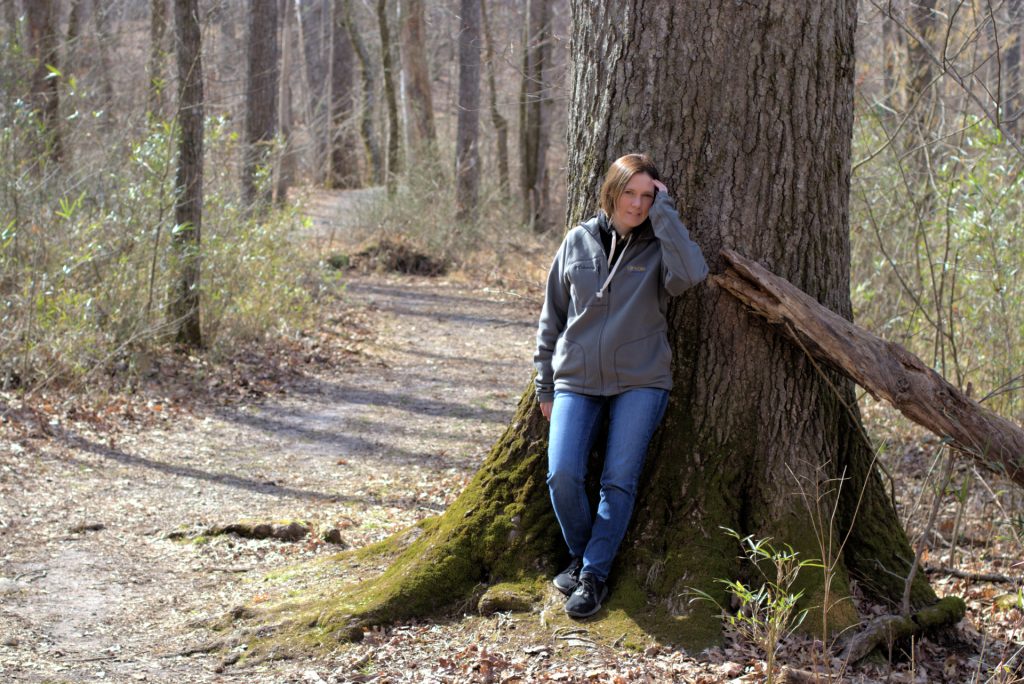
We were saddened to see several large trees uprooted by a recent severe thunderstorm, but there were still plenty of these beasts left standing tall. The photos show the enormity of the trees and the root balls of the ones that fell.
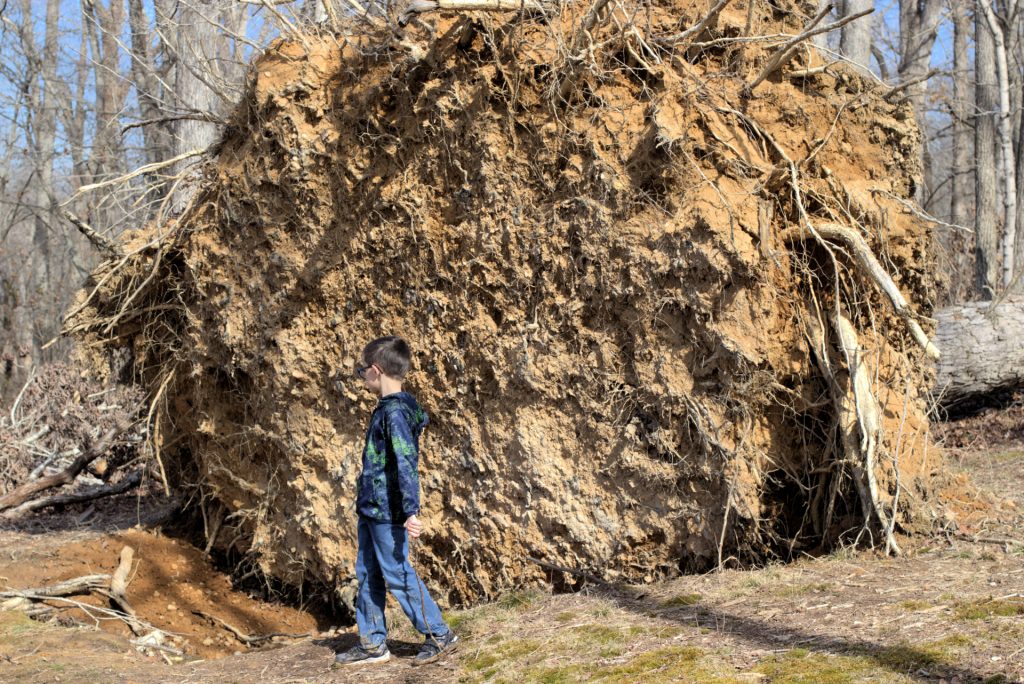
If you’re coming to the lakes region or if you’re planning to visit LBL, Hematite Lake should be at the top of your list. The wildlife, incredible trees and lily pads in the summer make this place pop. Fall colors are brilliant here, and winter showcases some of the more historical aspects of the place, such as better views of the pits and quarries. It is a day-use area and is open year-round.
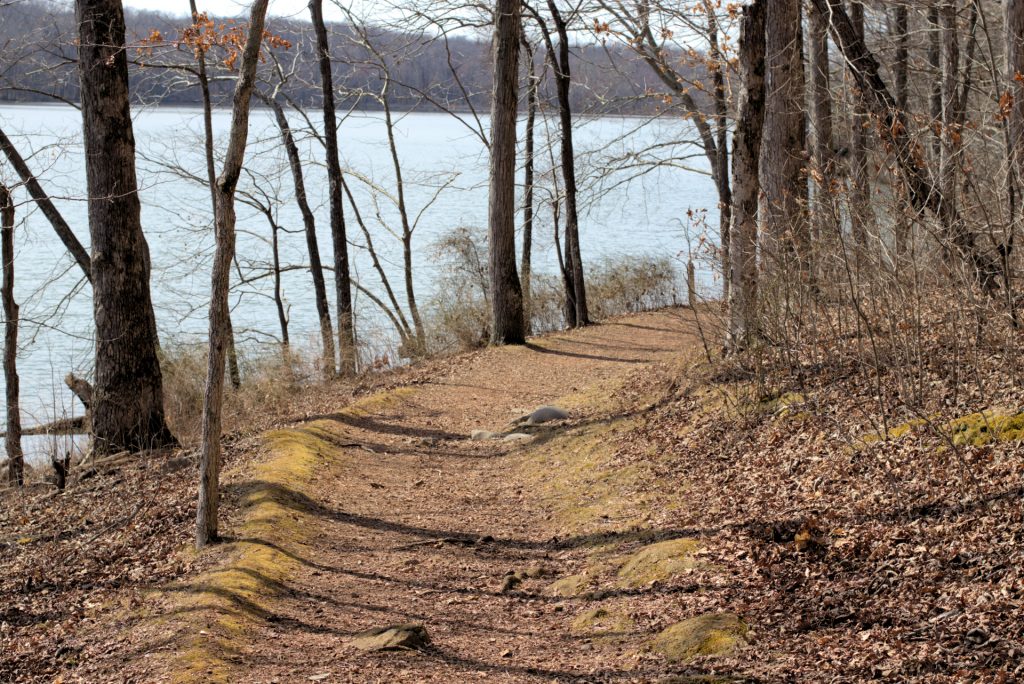
A big thanks to Carl Feagans, an archaeologist at Land Between The Lakes, for providing us with some of the historical information.


